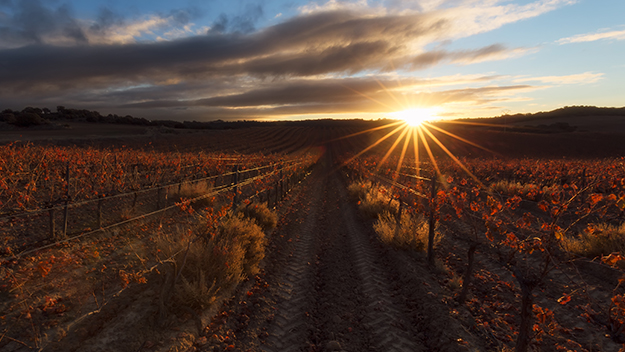Find your winery or vineyard
1 Wineries and Vineyards for sale in AOC Vin de Corse
Infographic of the Denomination of Origin

Change to imperial units (ft2, ac, °F)Change to international units (m2, h, °C)
AOC Vin de Corse
Although Corsican wine is among the oldest in the world, it was not until 1968 that the first appellation of origin (AOC Patrimonio) was granted. Today the island has 9 appellations of origin (AOC), three of which are in the Cru category, five in Village and then there is the generic appellation for the whole island, Corse. On the other hand, in the local wine category, there is a regional appellation of Vin de Pays de l'Île de Beauté. Here are the different appellations of origin (AOC):
AOC Crus
AOC Patrimonio: located in the Nebbio region (the north of the island, before Cap Corse, around Saint-Florent). It is the oldest and best known, and the second area in terms of production volume, with about 17% of the total Corsican wine. The red wines from Nielluccio grapes, powerful, the rosé wines from Nielluccio and the white wines from Vermentino stand out. With 409 ha, it is the appellation with the largest number of wineries on the island, around 30.
AOC Vin de Corse Ajaccio: in the west of the island, around the capital. It is the fourth Corsican AOC in terms of production volume (around 7%). It produces mainly red and rosé wines made from the Sciaccarellu grape (the indigenous grape), which produces less powerful wines, but with their own character. It also produces Vermentino whites with 239 ha and 13 wineries.
AOC Muscat du Cap Corse: located in the extreme north of the island, within the boundaries of the AOC Patrimoine and the AOC Coteaux du Cap Corse. It produces a single product, a white liqueur wine, based on Muscat du Cap Corse. The production is not very large (2000 hectolitres) with 103 ha and 4 wineries of the AOC Cap de Corse and 30 of the AOC Patrimoine.
AOC de Village (33 wineries and 18% of total production) Communal
AOC Vin de Corse Coteaux du Cap Corse: from the same geographical area as Cap Corse (except the Heritage area) and produces one of the most renowned dry white wines of the island (from Vermentino grapes). Finger-shaped rocky northern peninsula north of Bastia with only 37 hectares of vineyards and 4 wineries.
AOC Vin de Corse Calvi: 8% of Corsican wines come from the Calvi vineyards. On the northwest coast with 266 ha and 10 wineries (a region known as Balagne between Calvi and the Désert des Agriates).
AOC Vin de Corse Figari: the southernmost appellation of the island with 129 ha and 6 wineries (with the municipalities of Figari, Monacia-d'Aullène and Pianottoli-Caldarello).
AOC Vin de Corse Porto-Vecchio: in the south-east with 89 ha and 3 wineries (with the municipalities of Bonifacio, Conca, Lecci, Porto-Vecchio, San-Gavino-di-Carbini, Sari-di-Porto-Vecchio, Sotta, Zonza)
AOC Vin de Corse Sartène: located in the southwest of the island with 143 ha and has 10 wineries (with the municipalities of Arbellara, Belvédère-Campomoro, Bilia, Fozzano, Branace, Grossa, Giuncheto, Loreto-di-Tallano, Mela, Olmeto, Olmiccia-di-Tallano, Propriano, Saint-Andréa-di-Tallano, Santa-Lucia-di-Tallano, Sartène, Sollacaro, Tivolaggio, Viggianello).
AOC Vin de Corse Regional
This is the largest appellation on the island with 1,439 ha and includes those that are outside the other appellations. There are 14 located on the east coast and in the centre of the island. They produce more than 50% of Corsican wine. In general, they are wines of inferior quality.
WINERIES
The main wineries making Corsican wine include: Antoine Arena (AOC Patrimonio), Catarelli (AOC Patrimonio), Gentile (AOC Patrimonio), Leccia (AOC Patrimonio), Orenga de Gaffory (AOC Patrimonio), Alzeto (AOC Ajaccio), Capitoro (AOC Ajaccio), Comte Peraldi (AOC Ajaccio), Clos Nicrosi (AOC Cap de Corse), Domaine Maestracci (AOC Calvi), Domaine de Torraccia (AOC Porto-Vecchio).
Other important producers are Domaine de Canella, Domaine Culombu, Domaine de la Figarella, Domaine Filippi, Clos Landry, Domaine de Piana, Poggio d'Oro, Clos Reginu, Domaine de Tizziano, Domaine Bernard Renucci, Clos Canarelli.
Discover more wineries and vineyards for sale in these wine regions in Islands
Subscribe to our mailing list to receive news about wineries and vineyards.








